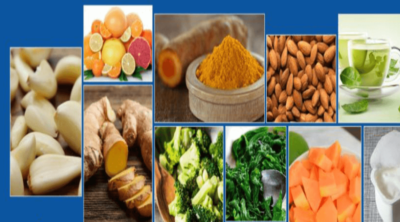
Mamoncillo, also called Spanish lime, is a small, tropical fruit filled with a creamy, tangy, and luscious pulp, and is said to have many health benefits. This NutriNeat article will take you through the benefits and nutrition facts of Mamoncillo fruit.
|
What’s in a name?
Well, everything! Mamoncillo is known by different names in different regions. Spanish lime (US), Ackee (Barbados), Genip, Guinep, Genipe, Ginepa (in Barbados, Jamaica, Bahamas, Puerto Rico, Trinidad and Tobago), Quenepa (Dominican Republic, Puerto Rico, Colombia), Chenet (Trinidad and Tobago), Canepa, Mamon (Colombia), Limoncillo (Dominican Republic), Honeyberry (Guyana), and Melicoccus Bijugatus (Binomial name). Phew! Call it by any name you want! |
Mamoncillo is a fruit-bearing tree that falls in the soapberry family Sapindaceae. It is native to South and Central America, Mexico, and parts of the Caribbean and Africa. It is said to have been introduced in the Caribbean in the pre-Columbian times.
This fruit-bearing tree produces small fruits of the size of an olive, and has hard and rigid skin. Inside you’ll find a yellowish-orange fruit that is creamy, pulpy, juicy, and mouth-watering similar to Lychee. It can be eaten fresh after pealing off the skin, or can be made into juice or jam. It can be sweet or sour, and can be had in whichever way you want. Because of the small amount of edible fruit, it is mostly boiled and then used in cold drinks. Make it into a dessert, sauces, juices, jams, or have it with condiments, it is healthy and has a number of benefits. Let us take a look!
| Calories | 58 |
| Fat | 0.1 g |
| Phosphorus | 9.8-23.9 mg |
| Carbohydrates | 13.5 g |
| Calcium | 3.4-15 mg |
| Fiber | 0.07-2.60 g |
| Sugar | 0 g |
| Tryptophan | 14 mg |
| Lysine | 17 mg |
| Protein | 0.5 g |
| Iron | 3% |
Health Benefits
- Mamoncillo is full of fiber that helps in lowering the cholesterol levels in the body and prevents constipation.
- It also contains Vitamin A that improves the immune system and prevents from stones getting formed in the urinary system.
- Vitamin C in quenepa acts like an antioxidant, and calcium helps in keeping the bones and teeth strong. The calcium in mamoncillo also helps prevent cancer.
- Phosphorous in this fruit is good for digestion and in regulating hormones.
- Quenepa also contains tryptophan, which is said to be good for your sleep, and lysine that helps in proper growth and also helps prevent herpes.
- It helps lower the blood pressure, and is quite beneficial for people with asthma.
- Since it contains antioxidants, they help in preventing cardiovascular diseases and stroke, and boosts the immune system.
- Being low in fat and cholesterol, it is helpful for those who are trying to lose weight.
- The leaves of mamoncillo tree can be boiled and made into tea that is extremely good for intestinal problems.
- Quenepa seeds when roasted, crushed, and mixed with honey helps in controlling diarrhea.
- The leaves of the tree can be scattered in the house to keep away the fleas.
Make sure that the Mamoncillo fruits you have is ripe, as the raw ones may contain some toxins. There’s a potential hazard of choking in small children because of the large seeds. The large seeds can be cooked and eaten. The roasted seeds are also used as a substitute for cassava flour in baking in South America. So, these were some benefits of the sweet and delicious Mamoncillo fruit.

